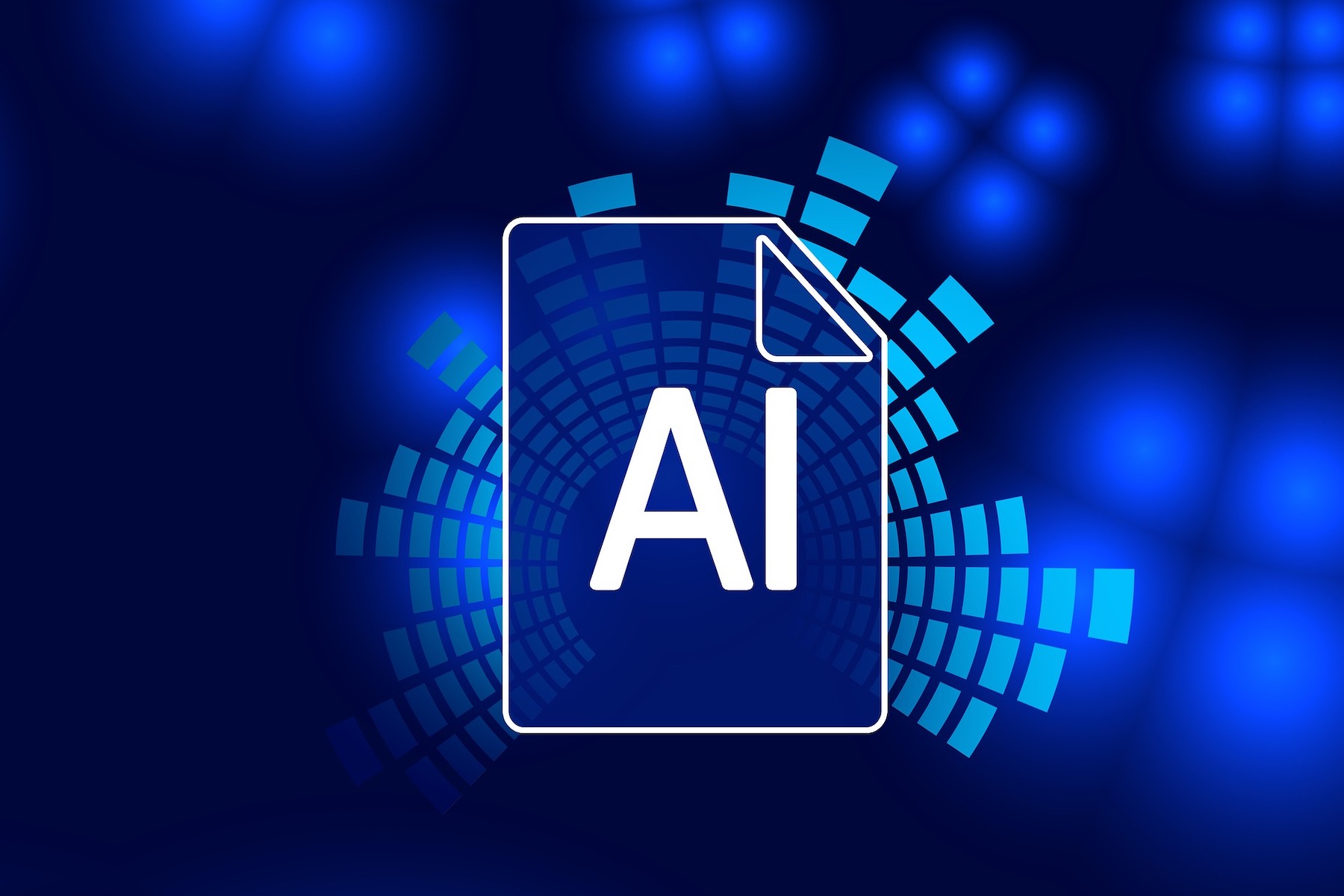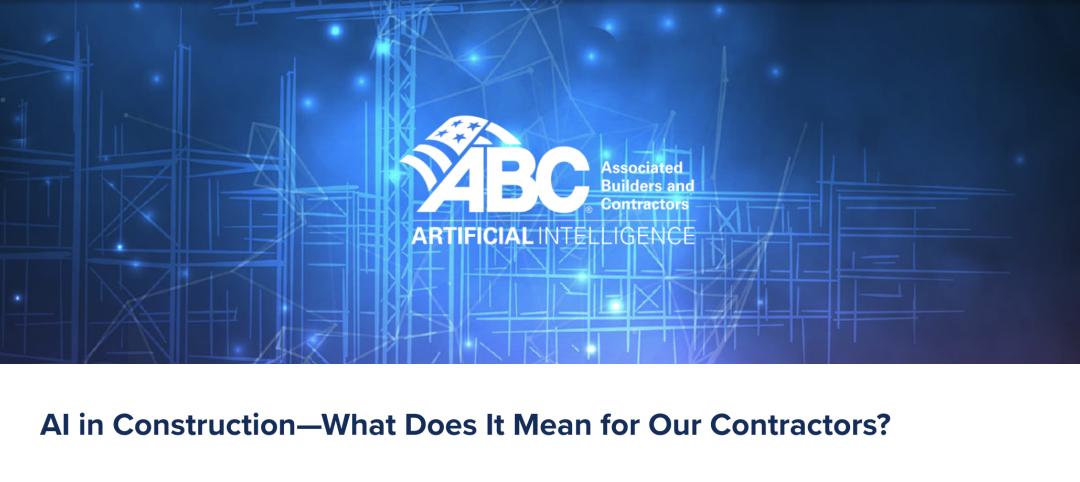There is growing curiosity about how artificial intelligence and machine learning fit into architecture, engineering, and construction. A new survey of A/E firms found that more than three-fifths of 652 respondents expect AI to improve their operational efficiency.
That survey, though, also found that the same portion of respondents wasn’t using AI yet, and two-thirds admitted they were struggling with where and how to apply AI.
These findings are part of the 45th annual Clarity Architecture & Engineering Study, a comprehensive report conducted by the enterprise software provider Deltek, and sponsored by AIA, the American Council of Engineering Companies, the Association of Consulting Engineering Companies|Canada, and the Society of Marketing Professional Services. The survey was taken between January and March of this year.
The report is organized to explore trends in Technology, Business Development, Human Capital Management, and Financial Management.
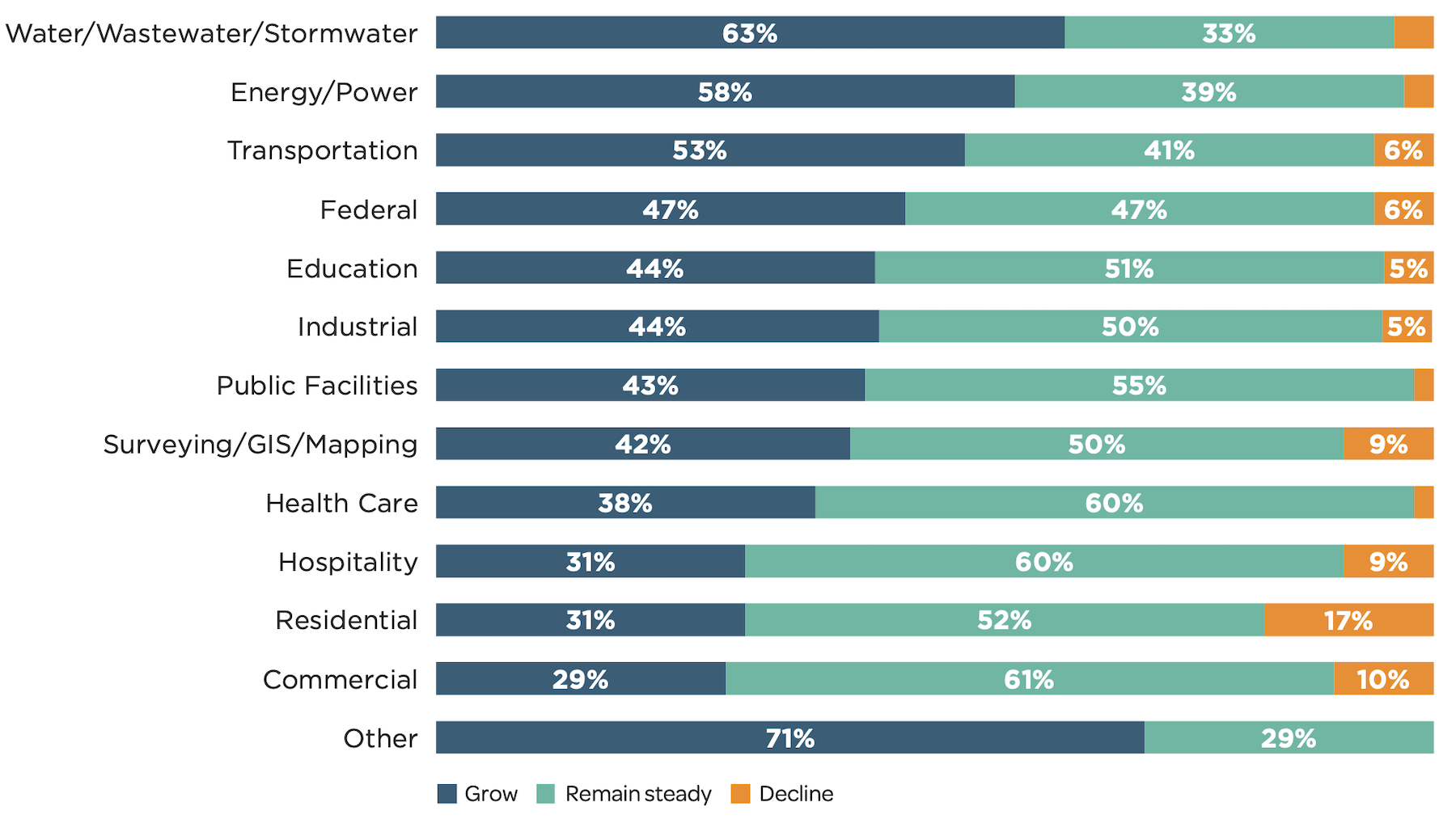
It found key financial metrics had held steady in 2023, reflecting an equilibrium following general economic volatility, inflationary pressures, and talent shortages observed in recent years. The survey’s respondents were generating, on average, 18.7% operating profit on net revenue that they forecast would grow that year by 10.9%.
The volume of proposal submissions and contracts awarded increased in 2023, yet the overall value of those contracts receded compared to the previous year. Work on existing buildings continued to be a strong opportunity area, notably in reconstruction, renovation and interiors versus new builds. Indeed, business has been so robust that firms have had the luxury of being more selective about the projects they accept.
But challenges remain: while high talent turnover has waned, worker shortages persist and many firms continue to make do with less, requiring the best-performing A/E firms to seek operational efficiencies and to cross-train talent.
Expanding tech use continues to be a strategic priority
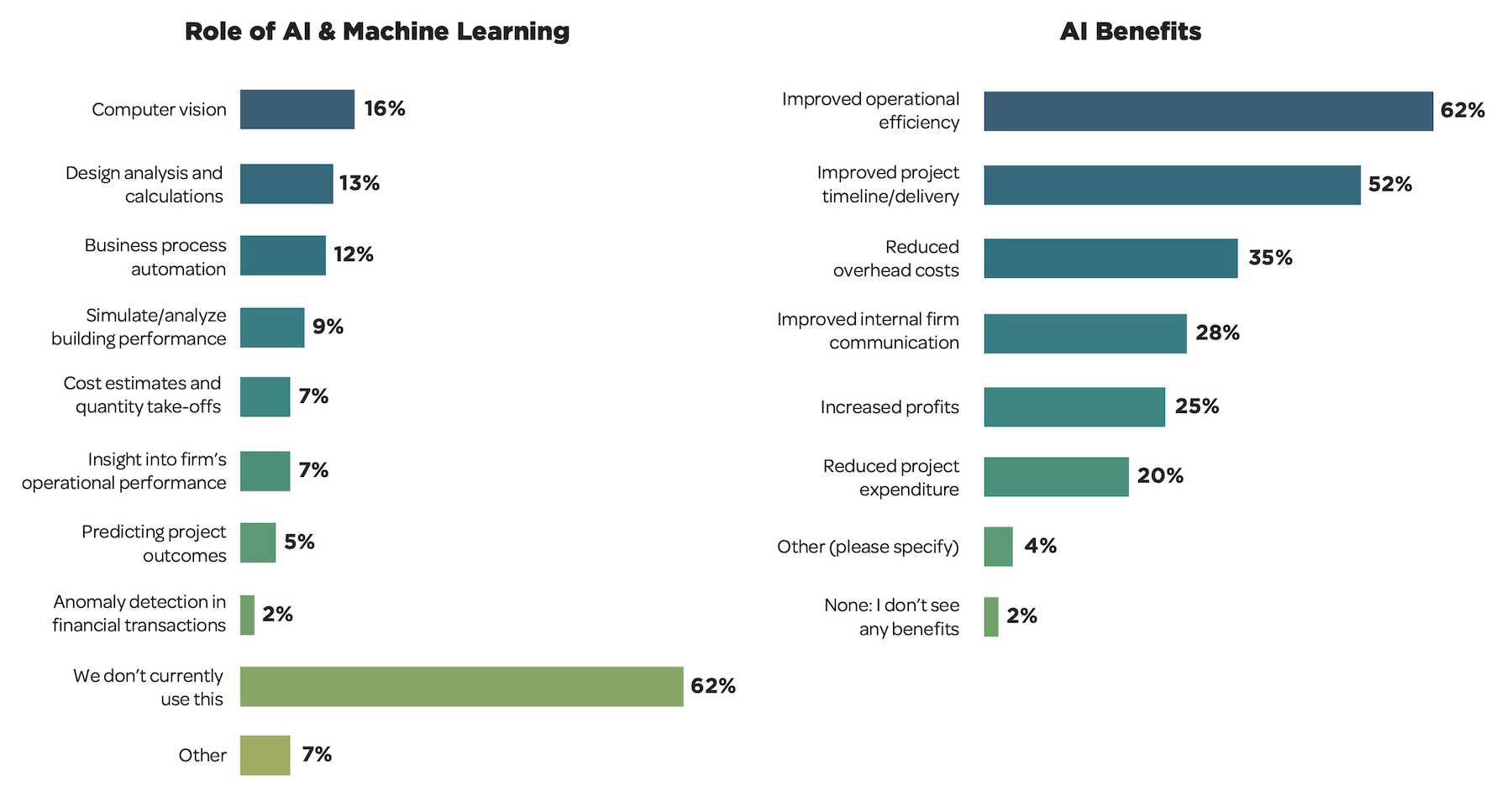
The report observes that, more than ever, A/E leaders are making technology a primary strategic focus. In doing so, Deltek urges those firms to turn to their own staffs for guidance, tap outside expertise, and consider client needs above all. Once A/E firms establish strategic priorities for technology, perceived cost will transition to an investment with long-term payoffs. Until then, “firms that allow costs to prevent them from advancing their business will fall behind. Firms must see past individual competing interests and expenses,” the report states.
When it comes to technological sophistication, A/E firms hold a relatively high opinion of themselves, with 35% self-classifying as “advanced” and “mature” on a digital transformation spectrum. Another 43% identify their firms as in the “applied” stage, which is in the center of the spectrum.
(The irony of these responses is that A/E firms are still reliant on manual data entry, especially for operations, administrative, and accounting. It’s not surprising, then, that 64% of respondents prioritized the creation of strategic technology implementation plans and 56% indicated the need to educate staff on critical technology trends.)
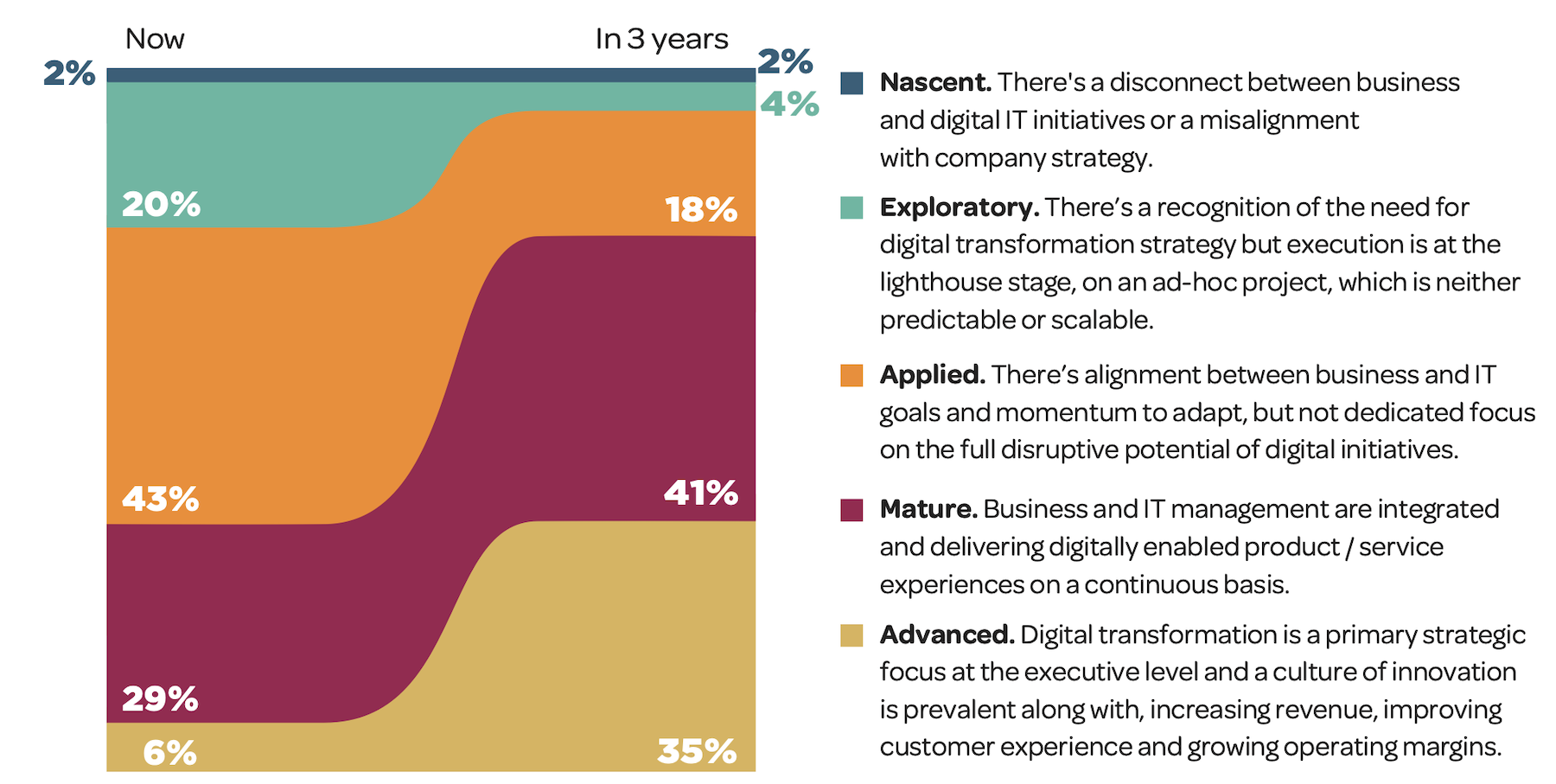
Looking ahead, 76% of firms are more than twice as likely to envision themselves as “advanced” and “mature” in just a few years. Another 18% expect to reach the “applied” stage, leaving only six percentage points in the immature “exploratory” and “nascent” stages.
Despite their relatively modest usage rate so far, firms largely expect AI to help most with improving operational efficiency (62%), improving project timeline/delivery (52%) and reducing overhead costs (35%). These priorities spotlight the urgent need to refine internal processes to yield cost savings and operational improvements.
On the other hand, concerns about data and cybersecurity have not abated for A/E firms, as more than 60% of respondents ranked it in their top three challenges for their IT operations two years in a row, with 29% identifying it as their No. 1 challenge.
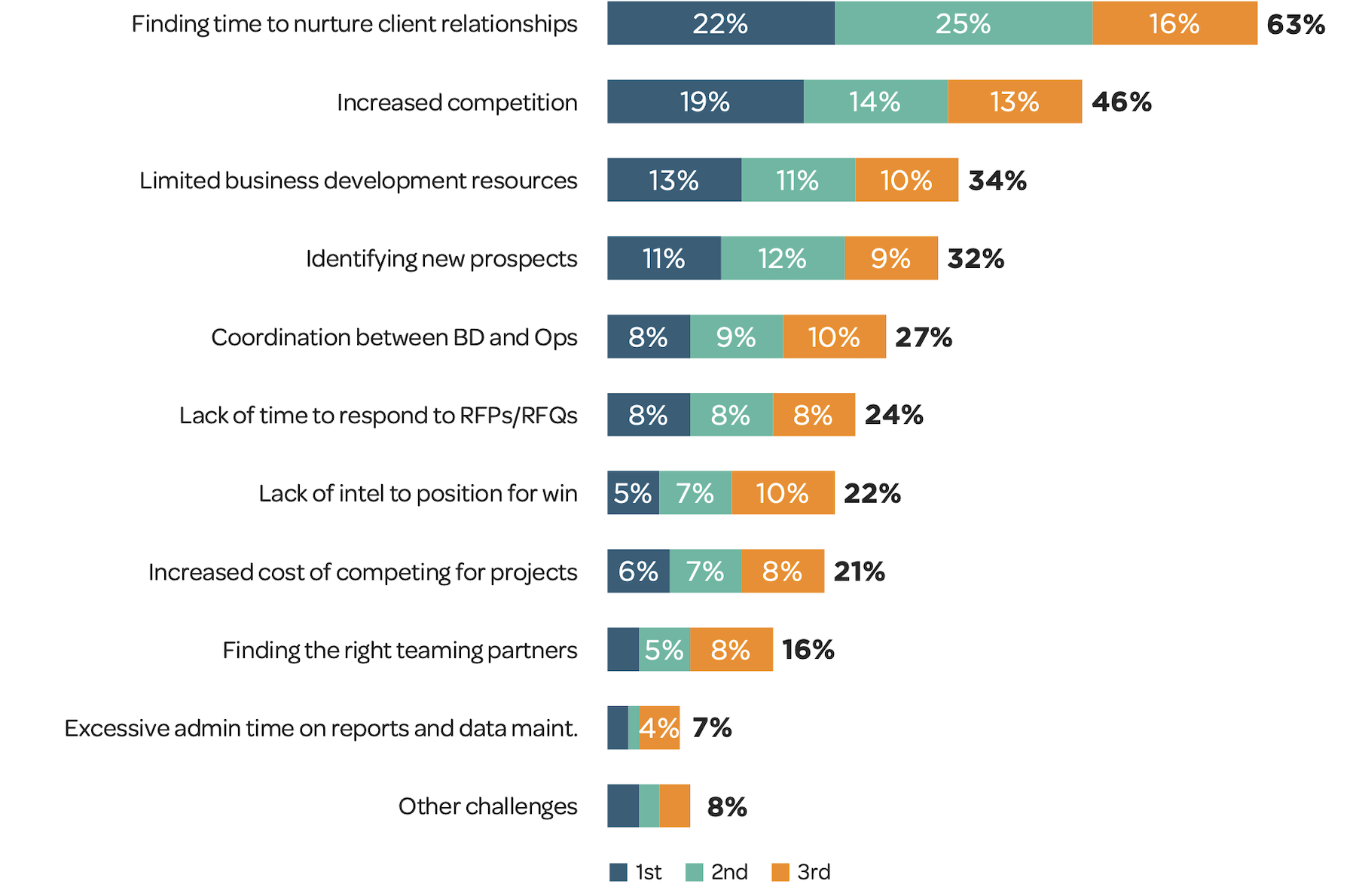
Almost half of firms report they leverage cloud solutions for more than 60% of their firm’s infrastructure, systems, workstations and storage. Significantly, even firms with historically few cloud solutions (0% to 19% leverage) have started their digital transformation journeys, jumping from 18% to 23% in one year.
Nearly one in four firms—16%—now offers technology services to clients as a revenue generator, or has one under consideration (7%). These services include technology consulting, application development, smart buildings/smart infrastructure and digital twins, among other services.
Career development programs being added
The report’s other revealing findings include:
•Firms with formal business development processes increased slightly to 46%. The report states that diversification is “strategically important,” as is finding the right teaming partners to identify and pursue opportunities outside of traditional offerings;
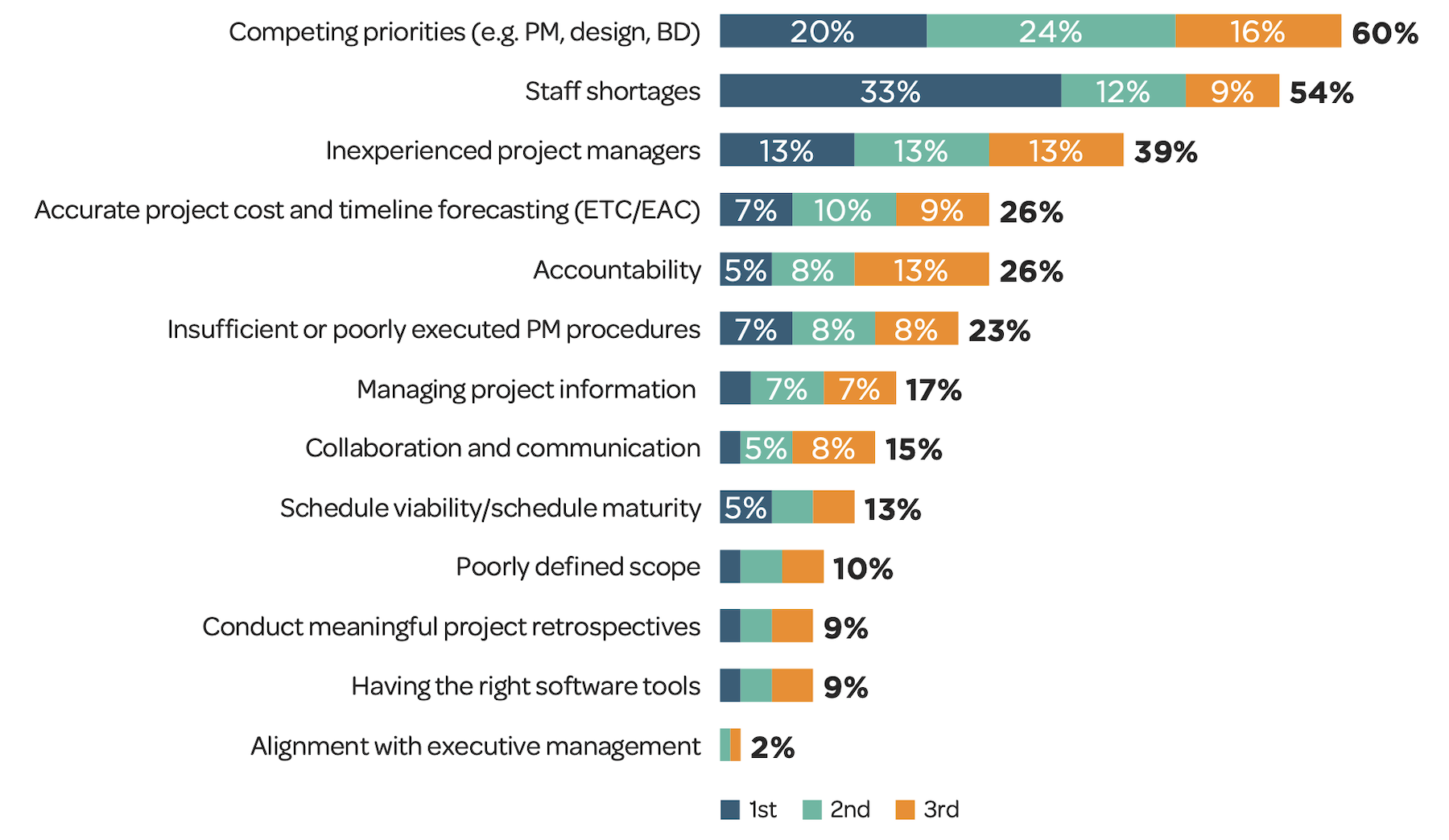
•Competing priorities (60%) and staff shortages (54%) ranked as the top two project management challenges, indicating that project managers currently feel like they’re getting stretched too thin and without sufficient support. Firms reported that 58% of projects were on or ahead of schedule, the lowest rate in seven years (it was 75% in 2017). Consequently, more firms are investing in project management training;
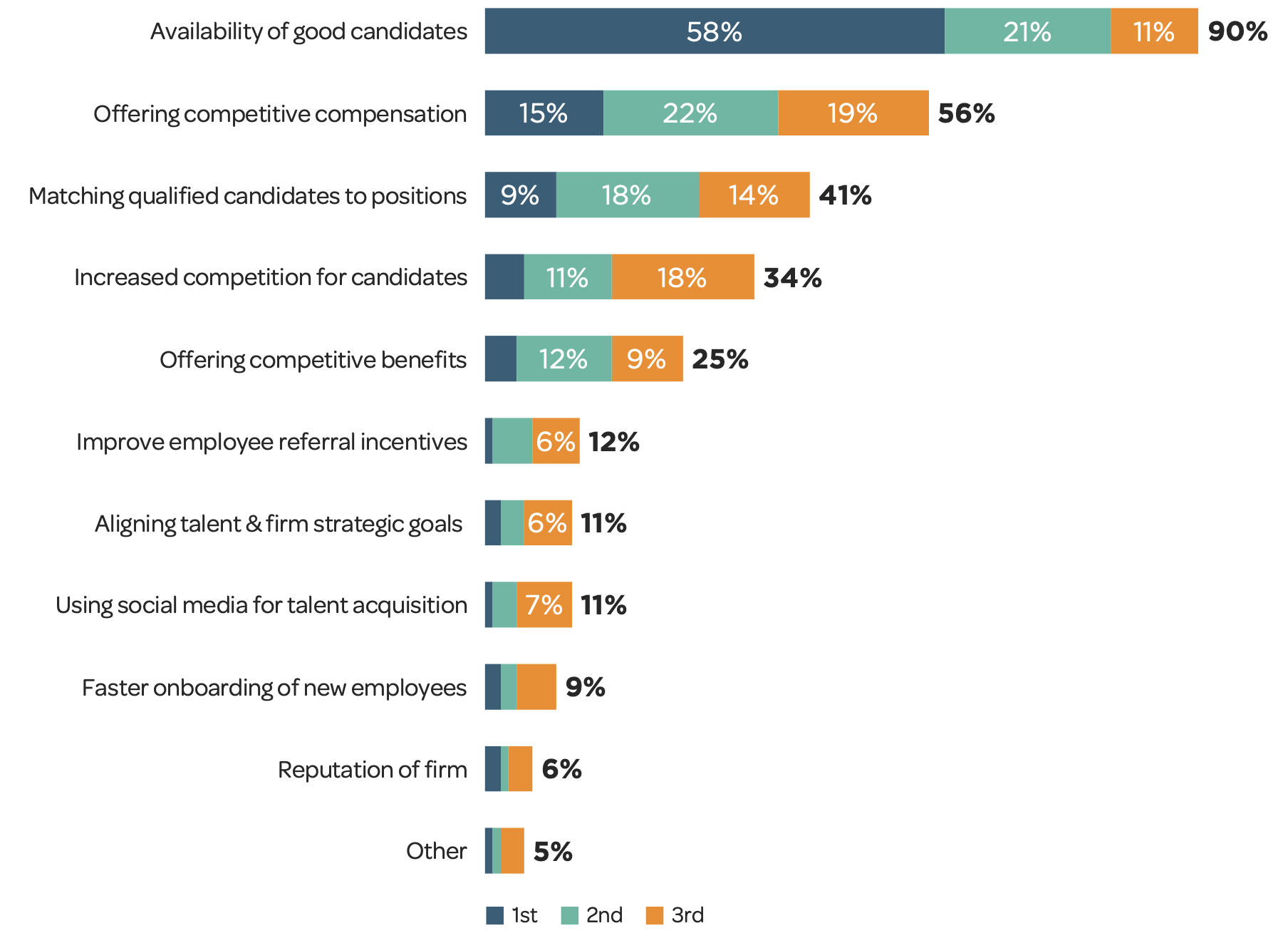
•Given the ongoing shortages in skilled labor—turnover still hovers around 14%—a growing number of firms are introducing and adopting structured career development programs. Overall, firms with career development plans grew to just under 40%, a 13-percentage-point increase year over year. Medium-sized and large firms demonstrated the most substantial growth in this area with medium-sized firms growing from 37% to 48%, and large firms climbing from 32% to 56%.
More firms are also turning toward providing better benefits to attract talent. More than a quarter of firms now utilize competitive benefits, up four percentage points year over year.
Related Stories
AEC Tech | Feb 28, 2024
How to harness LIDAR and BIM technology for precise building data, equipment needs
By following the Scan to Point Cloud + Point Cloud to BIM process, organizations can leverage the power of LIDAR and BIM technology at the same time. This optimizes the documentation of existing building conditions, functions, and equipment needs as a current condition and as a starting point for future physical plant expansion projects.
AEC Innovators | Feb 28, 2024
How Suffolk Construction identifies ConTech and PropTech startups for investment, adoption
Contractor giant Suffolk Construction has invested in 27 ConTech and PropTech companies since 2019 through its Suffolk Technologies venture capital firm. Parker Mundt, Suffolk Technologies’ Vice President–Platforms, recently spoke with Building Design+Construction about his company’s investment strategy.
AEC Tech | Feb 20, 2024
AI for construction: What kind of tool can artificial intelligence become for AEC teams?
Avoiding the hype and gathering good data are half the battle toward making artificial intelligence tools useful for performing design, operational, and jobsite tasks.
AEC Tech | Feb 20, 2024
ABC releases technology guide for AI in construction
Associated Builders and Contractors has released an artificial intelligence (AI) technology guide for the U.S. construction industry. AI in Construction — What Does It Mean for Our Contractors? outlines definitions, construction use cases, and considerations for the implementation of AI in construction.
AEC Tech | Jan 24, 2024
4 ways AEC firms can benefit from digital transformation
While going digital might seem like a playground solely for industry giants, the truth is that any company can benefit from the power of technology.
Modular Building | Jan 19, 2024
Building with shipping containers not as eco-friendly as it seems
With millions of shipping containers lying empty at ports around the world, it may seem like repurposing them to construct buildings would be a clear environmental winner. The reality of building with shipping containers is complicated, though, and in many cases isn’t a net-positive for the environment, critics charge, according to a report by NPR's Chloe Veltman.
AEC Tech | Jan 8, 2024
What's driving the surge of digital transformation in AEC today?
For centuries, the AEC industry has clung to traditional methods and legacy processes—seated patterns that have bred resistance to change. This has made the adoption of new technologies a slow and hesitant process.
Sustainability | Nov 1, 2023
Researchers create building air leakage detection system using a camera in real time
Researchers at the U.S. Department of Energy’s Oak Ridge National Laboratory have developed a system that uses a camera to detect air leakage from buildings in real time.
Building Owners | Aug 23, 2023
Charles Pankow Foundation releases free project delivery selection tool for building owners, developers, and project teams
Building owners and project teams can use the new Building Owner Assessment Tool (BOAT) to better understand how an owner's decision-making profile impacts outcomes for different project delivery methods.
Transportation & Parking Facilities | Aug 23, 2023
California parking garage features wind-activated moving mural
A massive, colorful, moving mural creatively conceals a newly opened parking garage for a global technology company in Mountain View, Calif.


